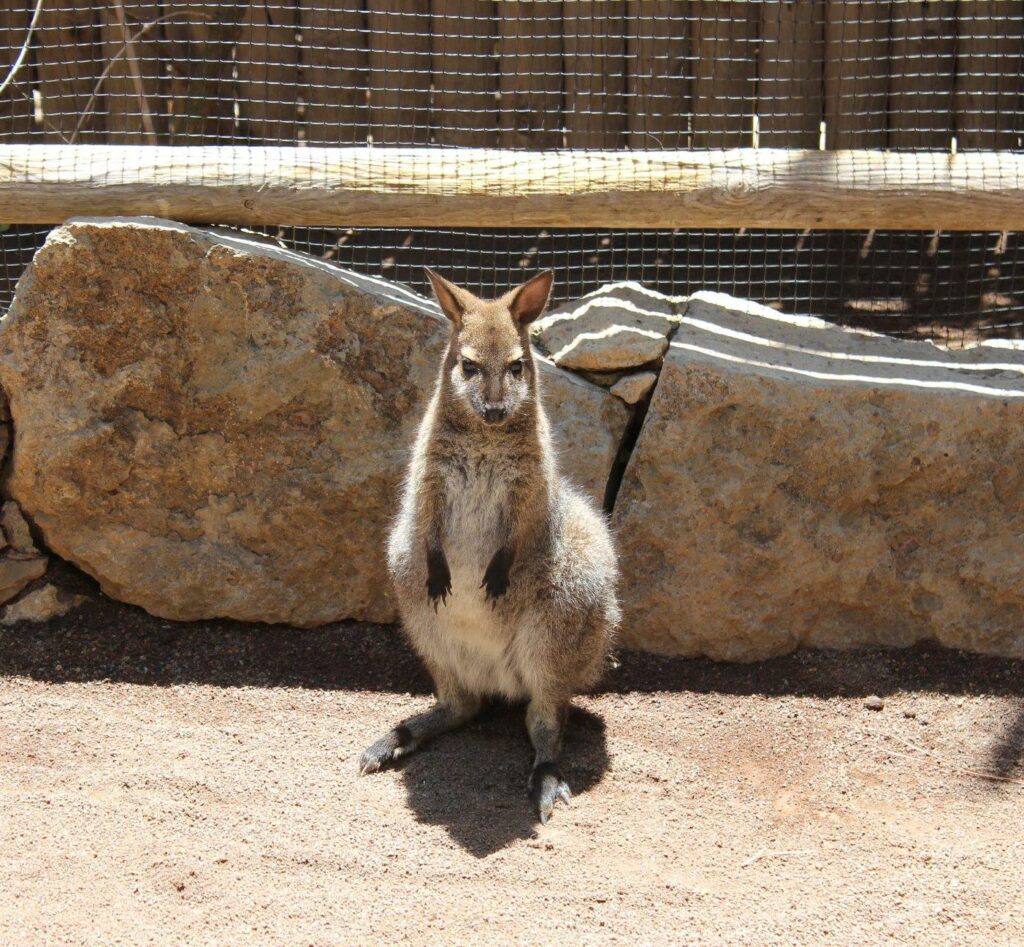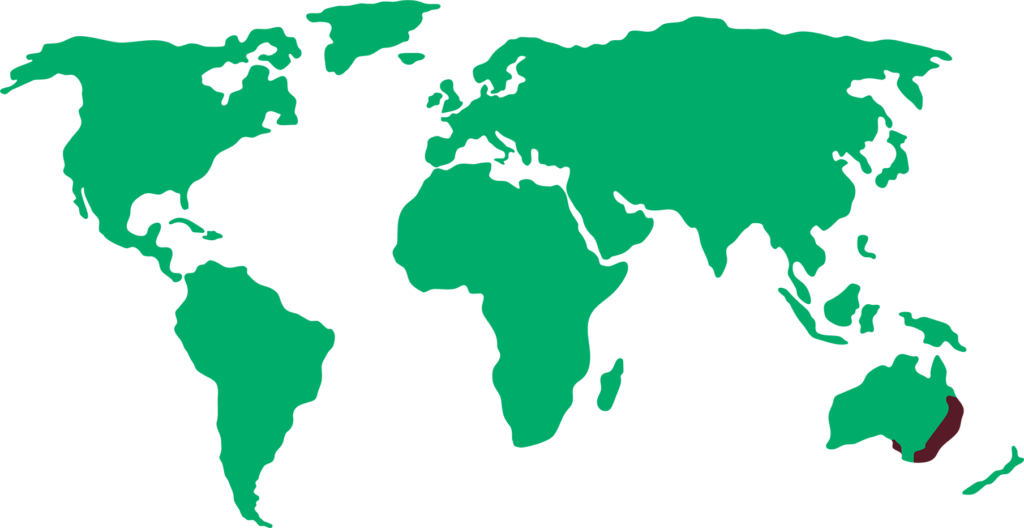RED-NECKED WALLABY
Macropus rufogriseus

LENGTH

90 cm
WEIGHT

20 kg
LIFESPAN

15 years
The red-necked wallaby or Bennett´s wallaby are diprotodontos marsupials (they have two incisors on the lower jaw) and alongside Kangaroos, they form the Macropodidae family.
General characteristics
Wallabies are smaller than kangaroos, with the red-necked wallaby being one of the largest of the species weighing more than 20kg and measuring around 90cm.
They have small heads with large, movable ears. Its fur is greyish and it has a red ribbon marking around its shoulders. This is where the name red-necked wallaby comes from.
Its legs and nose are black and its upper lip has black and white stripes. Out of its four legs, its hind legs are the largest and sturdiest with four toes, two of which are large and nailed and the rest are placed in a covering. The forelegs have five toes, all ending in nails.
Their tail is thick and elongated, measuring between 60-70cm, and is used to maintain its balance when jumping or walking.
Feeding
They are herbivores and feed mainly on grass.
Behaviour
Wallabies are usually solitary animals that feed at night or at dusk. In very hot weather, they tend to rest in sheltered places. When the resources ( such as water, food or shelter) are plentiful, they may form groups with a social hierarchy.
Females may remain in the family territory for the rest of their lives, but males usually leave at the age of two years.
Reproduction
The reproductive cycle of marsupials is complex. The mother can maintain up to three offspring at different stages of development at the same time.
The first pregnancy period of the breeding season consists of a 33-day gestation period, after which, a poorly developed calf is born and climbs into the marsupial pouch and remains there for five to six months until it completes its development. Once the offspring has born, the mother gets pregnant again but the presence of the first infant in the pouch interrupts the development of the new embryo. This period of delay is called embryonic diapause and can last up to 235 days. When the first infant leaves the marsupium (pouch), the embryo continues with its development and the second infant is born approximately one month later.
Then the female falls pregnant again but the development of the new embryo is delayed once more due to the lactation of the second infant. In the mean time the first infant goes back to the pouch from time to time to breastfeed. At that moment, the mother has three offspring of different ages relying on her: one the can stand alone, another in the pouch, and an embryo in the diapause phase in the uterus.
In the case of the Bennett´s Wallaby, the birthing season takes place throughout the Australian summer. One infant is born per litter which stays in the pouch some 280 days and leaves the mother around a month later.
Threats
The felling of trees is the main cause of the destruction of their habitat, as it significantly reduces their grazing land. Moreover, these animals are also threatened by the activity of human hunters.
Distribution
Wallabies live in the coastal scrubland and the eucalyptus forests on the west coast of Australia. They can also be found in Tasmania and on the Bass Strait Islands.

Did you know?
Newborn wallabies are blind.
They can jump at speeds of up to 64km/h, and can reach a height of 5 metres.
They lick their hands or forearms when they are nervous or when it is hot to cool down.
Conservation status
